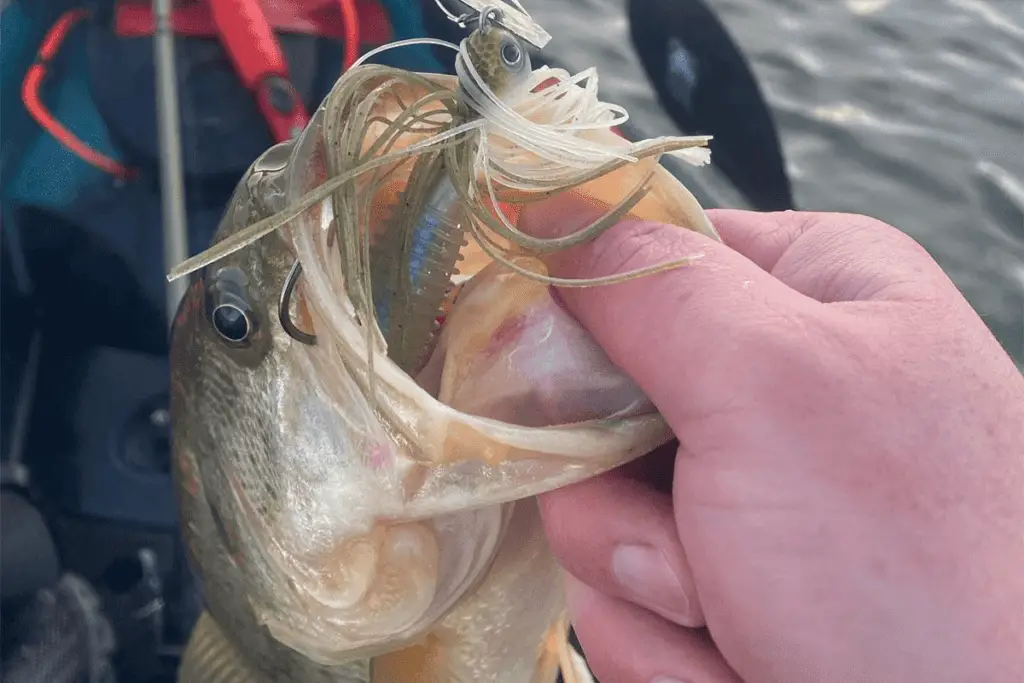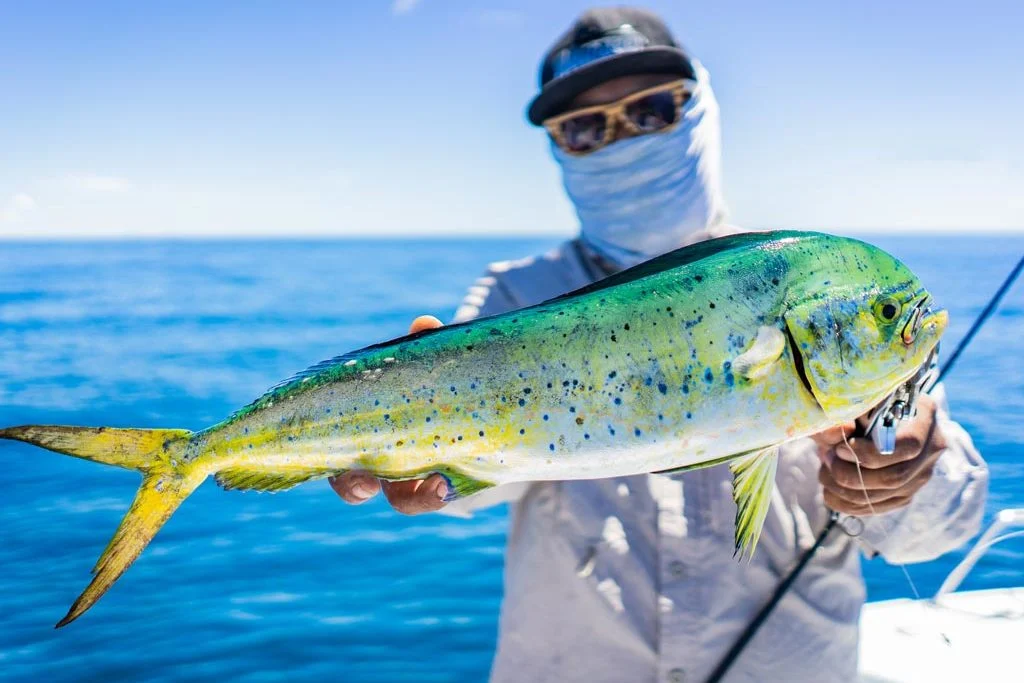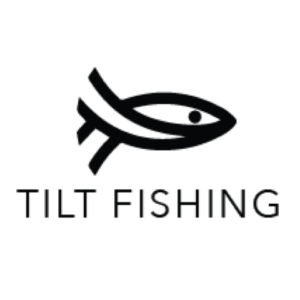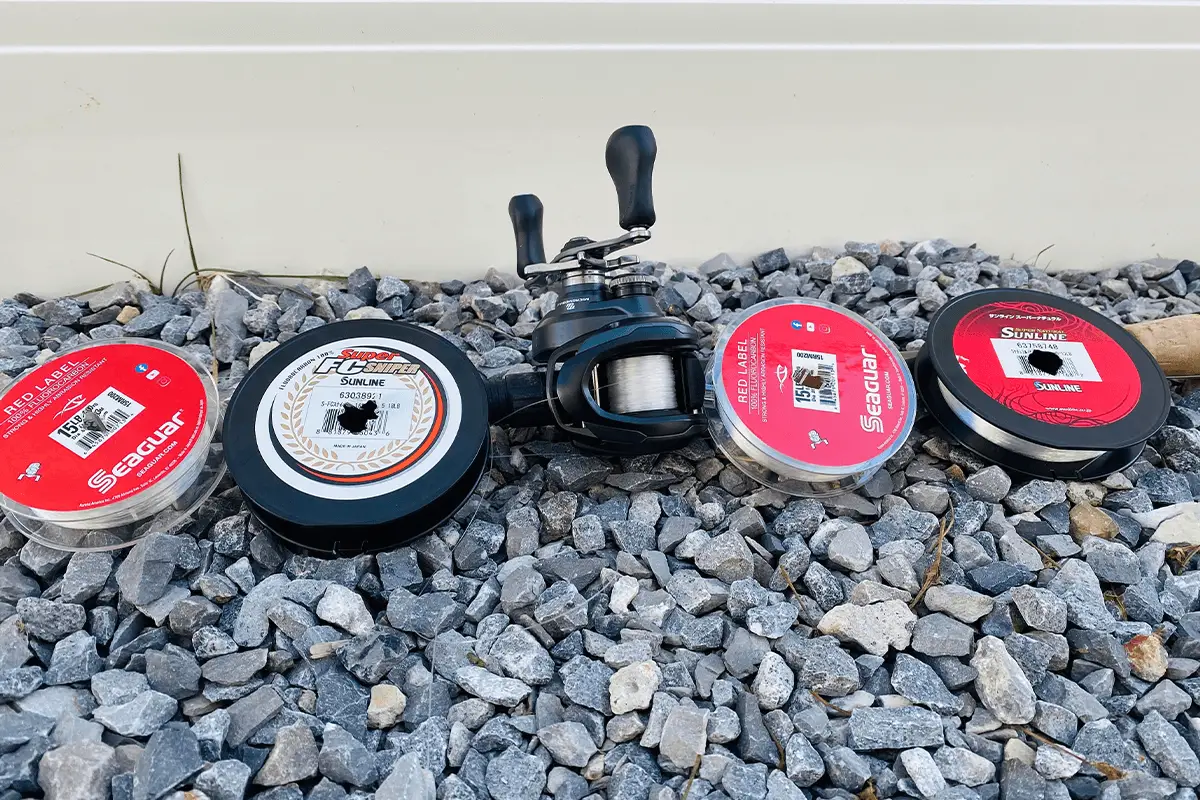Fishing leaders play a critical role in the sport of fishing. Whether you are a seasoned angler or just starting out, understanding the importance of fishing leaders can greatly improve your success on the water.
In this blog, we will explore why fishing leaders are an essential tool for anglers and how they can enhance your fishing experience by providing improved visibility, protection, sensitivity, and presentation. As well as discuss the ideal leader length size for each species and fishing technique.
From matching the strength and type of fishing line to the size of the fish being targeted, to reducing the visibility of the fishing line and preventing line breakage, fishing leaders are an important tool that every angler should have in their tackle box.
So, if you want to improve your fishing success and make the most of your time on the water, keep reading to learn more about the benefits of fishing leaders.
Let’s get started.
Finding the Optimal Fishing Leader Length for Your Next Catch
What is a Fishing Leader
First things first, what is a fishing leader? A fishing leader is a length of fishing line that is attached to the main fishing line. The leader serves several purposes, including:
- Line visibility: A leader can help reduce the visibility of the fishing line, making it less likely to spook fish and will result in more strikes.
- Line strength: A leader can help protect the main fishing line from abrasion or damage, especially when fishing with lures or in rough or rocky environments.
- Line sensitivity: A leader can provide better sensitivity and control, allowing anglers to detect bites more easily and set the hook more effectively.
- Line compatibility: A leader can help match the strength and type of fishing line to the type of fishing being done and the size of the fish being targeted.
A leader is typically made of a different material than the main fishing line and is often chosen based on its abrasion resistance, invisibility, and sensitivity. The length of the leader can vary depending on the type of fishing being done, the size of the fish being targeted, and the type of line being used.
How Long Should Your Leader Line Be?
A general rule of thumb when selecting the right leader for fishing is to use a leader that is at least as long as the length of the fishing rod. Generally, a leader length of 7-9 feet is a good starting point for most fishing situations.
This allows me to cast the bait or lure further and reduces the risk of line tangles or other issues. Additionally, using a leader that is at least as long as the fishing rod provides more control over the line and helps to ensure a smooth and accurate cast.
When fishing in clear water or targeting wary species, using a leader that is longer than the fishing rod may be necessary to minimize the visibility of the line and increase your chances of success. Ultimately, the right leader length will depend on a variety of factors, and anglers should take the time to choose the right length to best suit their fishing needs.
How Long Should Leader Line Be by Species

The ideal length of a fishing leader can vary greatly depending on the species of fish being targeted and the type of fishing being done. For example, a longer leader may be necessary when targeting wary species such as trout in clear water, while a shorter leader may be sufficient for larger predatory fish such as bass or pike.
It’s important to choose the right leader length for your specific fishing situation in order to maximize your chances of success and minimize the risk of line breakage or other issues.
Here is a quick guide on how to choose the right leader length depending upon your target species.
How Long Should Leader Line Be for Bass
When determining the appropriate leader length to use while bass fishing you should consider the following factors:
- Type of fishing: Topwater, jig, crankbaits or baits and lures
- Type of water: Clear or murky
- Size of the bass: Larger or smaller
- Type of rig or lure: Texas rig, Carolina rig, or dropshot rig
For topwater fishing, a leader length of 2-3 feet is common. For jig and worm fishing, a leader length of 4-6 feet is common. In clearer water, a slightly longer leader of 6-8 feet may be used.
Ultimately, the best way to determine the ideal leader length for bass fishing is to experiment with different lengths and see what works best in your specific fishing conditions. A longer leader can help reduce the visibility of the line, while a shorter leader can provide better sensitivity and control. It’s also important to consider the type of lure or bait being used and the size of the bass you are targeting.
How Long Should Leader Line Be for Trout
The length of the leader line for trout fishing depends on several factors such as:
- Type of fishing: Fly fishing or spin fishing
- Type of water: Clear or murky
- Size of the trout: Larger or smaller
- Type of lure or fly: Wet fly or dry fly, spinners, spoons etc.
For spin fishing, a leader length of 2-3 feet is common, but this can vary based on the size of the trout and the type of lure being used. For fly fishing in clear water, a leader length of 9-12 feet is common. In murky water, a slightly shorter leader of 7-9 feet may be used.
Ultimately, the best way to determine the ideal leader length for trout fishing is to experiment with different lengths and see what works best in your specific fishing conditions.
How Long Should Leader Line Be for Carp
The length of the leader line for carp fishing depends on several factors such as:
- Type of fishing: Bottom fishing or surface fishing
- Type of water: Clear or murky
- Size of the carp: Larger or smaller
- Type of rig or bait: Running rig or helicopter rig
For bottom fishing, a leader length of 4-6 feet is common. In clearer water, a slightly longer leader of 6-8 feet may be used. For surface fishing, a leader length of 2-3 feet is common, but this can vary based on the size of the carp and the type of rig being used.
Ultimately, the best way to determine the ideal leader length for carp fishing is to experiment with different lengths and see what works best in your specific fishing conditions. Keep in mind that a longer leader can help reduce the visibility of the line, while a shorter leader can provide better sensitivity and control.
How Long Should Leader Line Be by Angling Method

How Long Should Leader Line Be for Saltwater Fishing
When selecting a leader line length when fishing saltwater you should consider the following factors:
- Type of fishing: Trolling, casting, or bottom fishing
- Type of water: Clear or murky
- Size of the fish: Larger or smaller
- Type of rig or lure: Live bait rig, trolling lure, or jig
In saltwater fishing for trolling, a leader length of 4-6 feet is common. For casting, a leader length of 2-3 feet is common, but this can vary based on the size of the fish and the type of lure being used. For bottom fishing, a leader length of 4-6 feet is common, but this can vary based on the size of the fish and the type of rig being used.
When all is said and done, the best way to determine the ideal leader length for saltwater fishing is to experiment with different lengths and see what works best in your specific fishing conditions. In saltwater, a longer leader can help reduce the visibility of the line and reduce the risk of line twist, while a shorter leader can provide better sensitivity and control. It’s also important to consider the type of fishing, the type of fish being targeted, and the clarity of the water.
How Long Should Leader Line Be for Fly Fishing
When fly fishing the right leader length may vary depending upon the targeted species, conditions and the type of flies you are using. As a general guideline, most fly-fishing leaders should be between 6-13 feet long. If you aren’t sure what length to use I would recommend starting out with using a 9-foot tapered leader and adjust the length as needed.
When fishing in clear or highly pressured water adding tippet or using a longer leader is ideal. In these situations, I’ll use a leader/tippet length of around 12 feet long. If you are fishing in stained or muddy water or targeting more aggressive fish you can get away with using a shorter leader. In these situations, I’d recommend using a 6 to 8-foot leader. Short leaders are also beneficial when fishing with streamers and heavier flies as they make it easier to control and cast.
Do You Need to Use a Leader?
There are many benefit’s to adding a leader to your fishing setup. But there are also some drawbacks to consider as well.
Using a leader when fishing can be beneficial in several ways, including:
- Line visibility: A leader can help reduce the visibility of the fishing line, making it less likely to spook fish.
- Line strength: A leader can help protect the main fishing line from abrasion or damage, especially when fishing with lures or in rough or rocky environments.
- Line sensitivity: A leader can provide better sensitivity and control, allowing anglers to detect bites more easily and set the hook more effectively.
- Line compatibility: A leader can help match the strength and type of fishing line to the type of fishing being done and the size of the fish being targeted.
However, using a leader is not always necessary and can sometimes have a negative impact on fishing performance. For example, using a leader can add an additional line between the hook and the angler, reducing sensitivity and making it more difficult to detect bites. Additionally, using a leader can reduce the overall strength of the fishing line by creating a weak point where the leader is tied to the main line.
Ultimately, whether or not to use a leader when fishing depends on the specific fishing conditions, the type of fishing being done, and the angler’s personal preference.
Best Fishing Leaders Materials
There are several different types of fishing lines that can be used as leaders, each with its own unique characteristics and strengths. Monofilament, fluorocarbon, and braided fishing lines are all popular choices for use as leaders, and each type has its own advantages and disadvantages.
The best fishing leader material depends on several factors such as:
- Type of fishing: Freshwater, saltwater, or surf fishing
- Type of fish: Larger or smaller
- Type of rig or lure: Live bait rig, trolling lure, or jig
- Water conditions: Clear or murky
Here are some popular fishing leader materials:
- Monofilament: Monofilament is a versatile leader material that is easy to knot and handle, and is a good choice for both freshwater and saltwater fishing.
- Fluorocarbon: Fluorocarbon is a dense, low-stretch material that is virtually invisible underwater and is a good choice for clear water conditions.
- Copolymer: Copolymer is a hybrid of monofilament and fluorocarbon and offers the benefits of both materials, including good knot strength and low visibility.
- Wire: Wire leaders are often used when fishing for toothy species such as pike or musky and can also be used in saltwater for species such as bluefish or barracuda.
- Braided Line: Braided line can be used as a leader when fishing with lures or when fishing in heavy cover, as it provides good abrasion resistance and sensitivity. For most fishing applications braid is best suited as a main line and is rarely used as a leader.
It’s important to consider the type of fishing and the size of the fish being targeted when choosing a leader material, as different materials have different strengths and weaknesses.
Best Fishing Knots to Use for Leaders
The best fishing knot to use for a leader depends on the type of fishing line being used and the type of fishing being done. Some popular knots for tying leaders include:
- Improved Clinch Knot: This knot is versatile and easy to tie, making it a good choice for tying leaders to hooks or lures.
- Surgeon’s Knot: This knot is commonly used for tying two pieces of fishing line together and is a good choice for creating a leader with a tippet or when connecting a leader to a main line.
- Blood Knot: This knot is commonly used for tying two pieces of monofilament line together and is a good choice for connecting a leader to a main line.
- Triple Surgeon’s Knot: This knot is a variation of the Surgeon’s Knot and is used for tying two pieces of braided line together.
- Rapala Knot: This knot is a good choice for tying a leader to a lure, especially when using braided lines.
It’s always a good idea to practice tying these knots before heading out on a fishing trip to ensure that you can tie them quickly and efficiently.
Conclusion
In conclusion, choosing the right fishing leader length is a critical aspect of successful fishing. Whether you’re targeting wary trout in clear streams or hunting giant marlins in the open ocean, a well-selected leader can make all the difference in your chances of success.
By taking into account factors such as the type of fishing, the species of fish being targeted, and the type of bait or lure being used, anglers can select the ideal leader length to help put more fish in the boat and have a more enjoyable and productive day on the water.
Whether you’re a seasoned pro or just starting out, taking the time to select the right fishing leader length is a simple and effective way to enhance your fishing experience and bring your angling skills to the next level.

